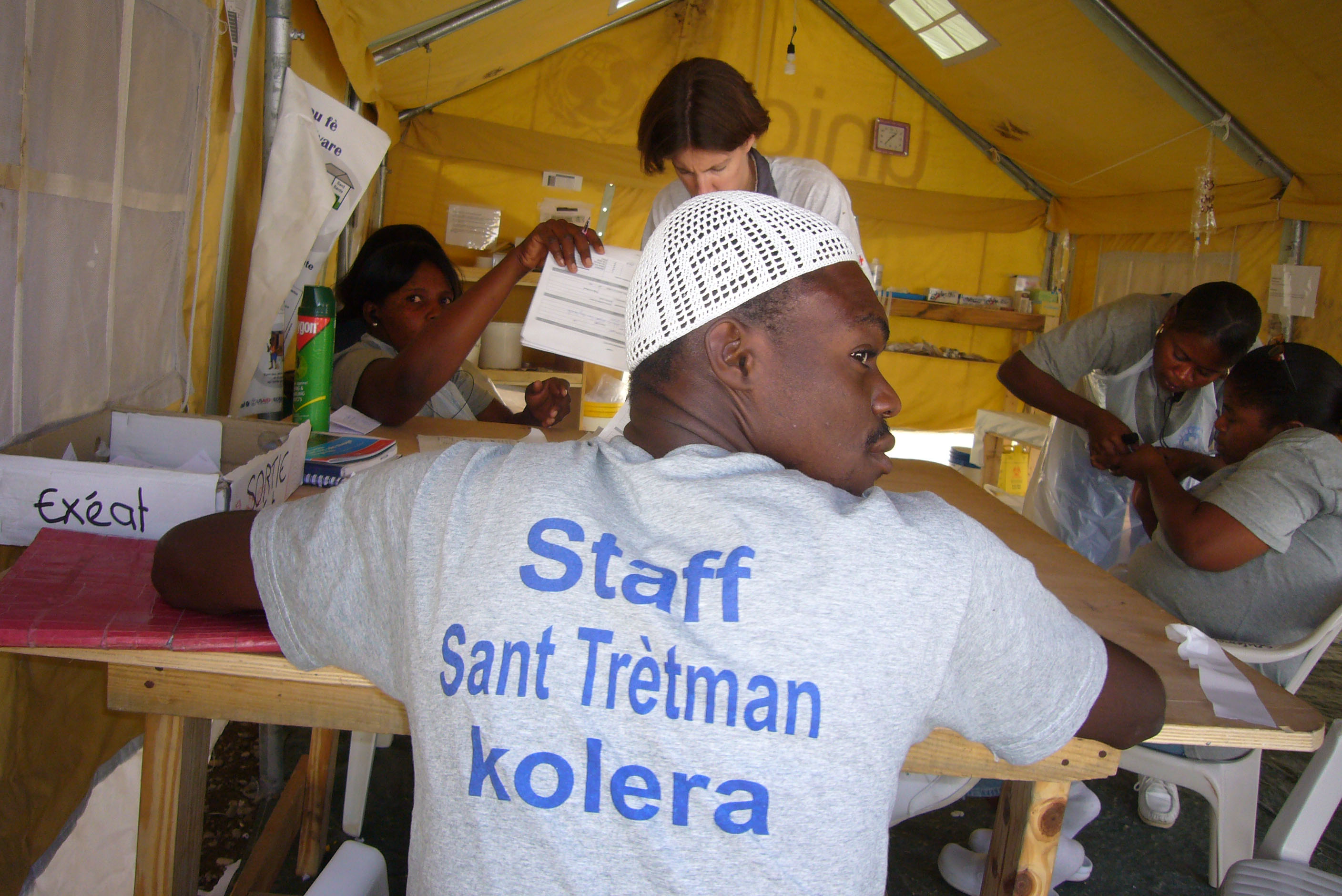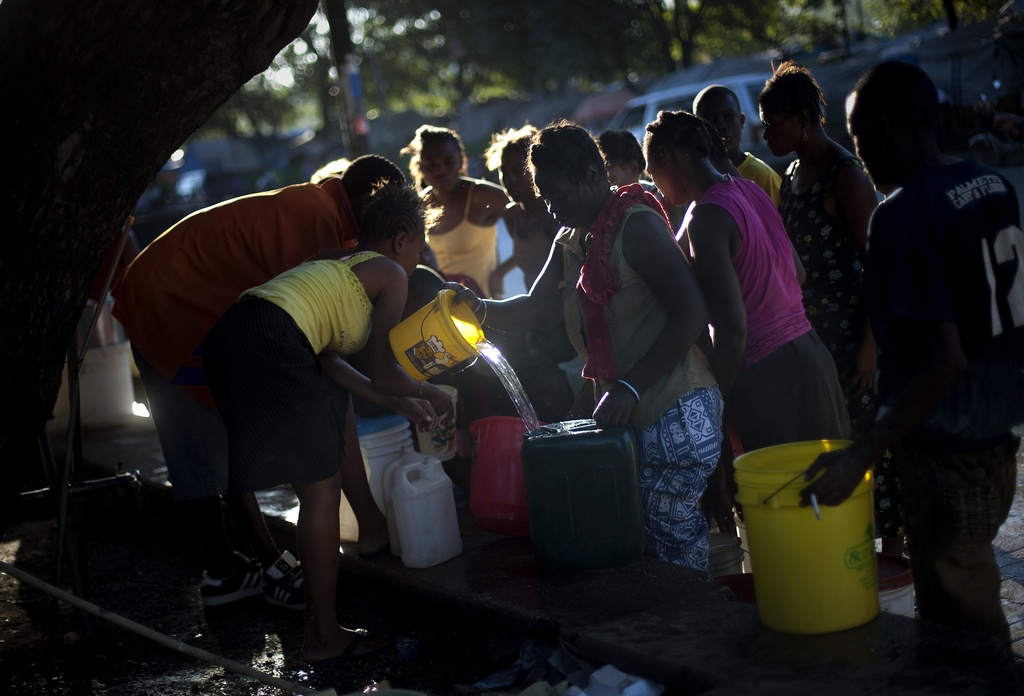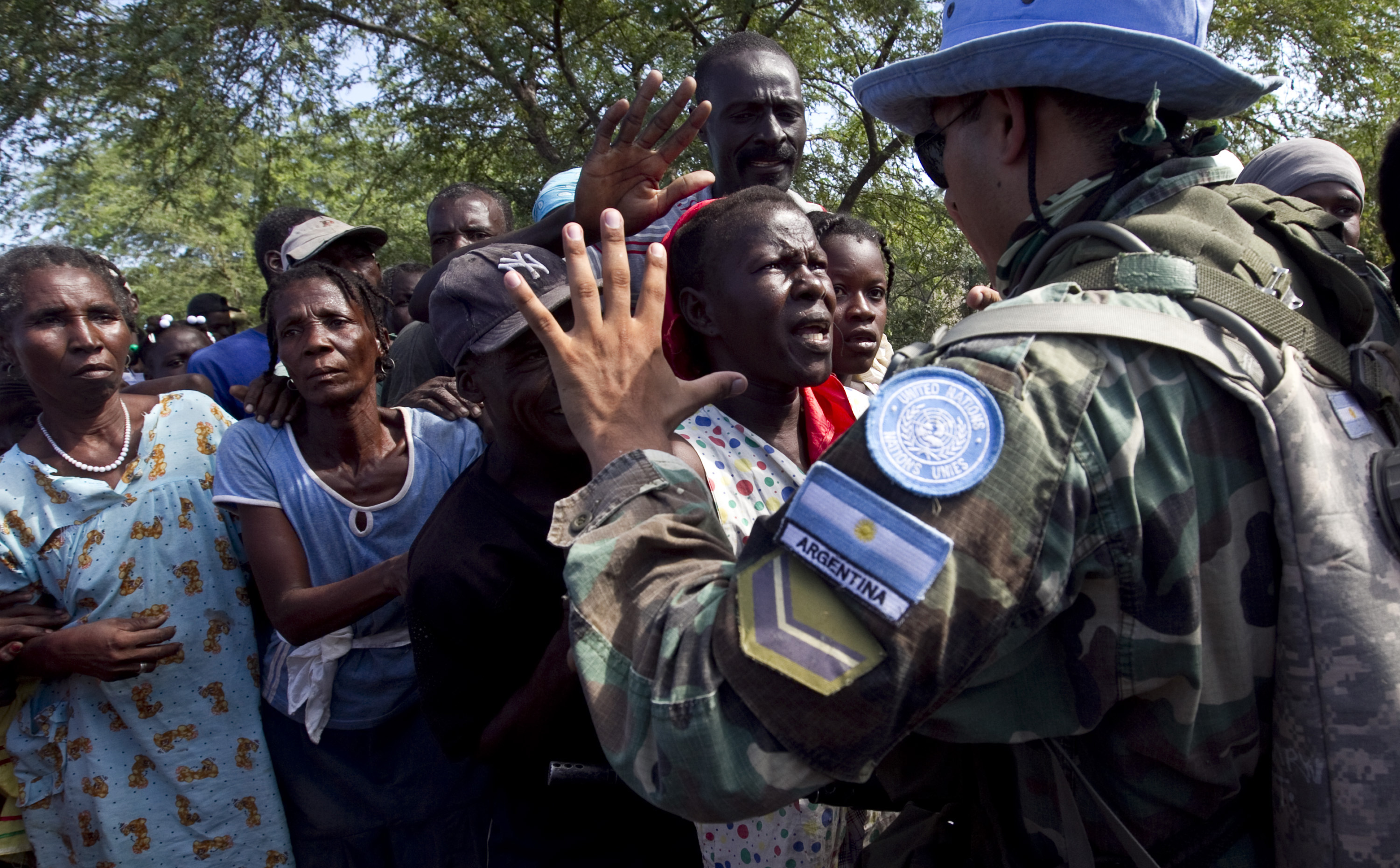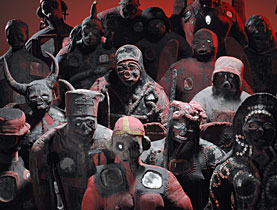Battling cholera in Haiti

The cholera epidemic that started on Haiti in October 2010 rages on. Officials say the outbreak has now killed 3,300 people, but the real figure may be much higher.
swissinfo.ch visited the Grand-Goâve treatment centre, 50km west of the capital, Port-au-Prince, to meet the people saving the lives of those suffering and dying from cholera.
Marie-Claude is all too familiar with the welcome tent of the Grand-Gôave cholera treatment centre. This is the second time in just under a week that she has been here with a member of her family. Today her father is lying before her on a simple wooden bed covered with plastic sheeting with a hole in the middle.
Below him a bucket is slowly filling up with a continuous flow of liquid excrement, symptomatic of the cholera epidemic.
But Marie-Claude’s father should be back on his feet in three or four days thanks to a saline rehydration solution that compensates the loss of up to 15-20 litres of water a day. His case is similar to that of dozens of others who arrive every day at the centre from the surrounding community that numbers 110,000.
Fearful epidemic
At Grand-Goâve the first cases of cholera emerged in mid-November. They were attributed to two people who had returned from the northwestern Artibonite region where the first cases were detected. Some Haitians have blamed Nepalese peacekeepers with the United Nations force in Haiti as being the original carriers to the island.
After four days’ care the two patients returned home, but one died soon after.
“But not from cholera,” explained Milord Jean Webert Jocelyn, responsible for civil protection at Grand-Goâve. “He was abandoned by his friends and family in a hut, and most likely died of hunger or thirst.”
Since then, the infection has spread rapidly in the region, as in the rest of Haiti, due to the lack of clean drinking water and latrines, unhealthy conditions, promiscuity in the camps for the displaced and malnutrition.
It has been aided by fears and misunderstandings about the unknown epidemic. As a result, a huge communication effort has been undertaken using radio programmes, workshops in health centres and posters encouraging locals to create their own rehydration fluids.
Speedy treatment
Doctors of the World-Switzerland, which has been present in the region for over 15 years, is the driving force behind this initiative.
“Our deep knowledge of Haiti and excellent collaboration with other NGOs and contacts among the population have enabled us to contain the epidemic and prevent violent attacks against treatment centres that occurred in the north of the island,” explained Hervé Manaud, head of the Grand-Goâve centre.
The presence of numerous humanitarian organisations in the region has resulted in a quick response to the epidemic, which was not the case in Artibonite, a region that was relatively unaffected by the earthquake and ignored by medical NGOs.
Unique consortium
Around 100 staff work at the Grand Goâve centre, set up on a 700 square-metre stretch of land in just ten days, looking after 85 patients living in tents.
The canvas hospital is the work of close collaboration between Doctors of the World, the Swiss Red Cross, Terre des Hommes and Swiss federal relief experts.
“To my knowledge this is the first time in Switzerland’s humanitarian history that such a consortium has been set up to reply this swiftly to a sudden problem,” added Manaud.
The centre today serves as a model for other NGOs who travel from the capital for professional inspiration. However, this does not mean that daily cholera problems have disappeared.
The most urgent is access for people living in the remote inland hills which remain inaccessible by vehicle. The long journey by donkey is often fatal for patients. But thanks to helicopters made available by the United Nations, Doctors of the World is setting up a number of treatment units that should help rehydrate patients on the spot.
Political fears
In Grand-Goâve access is easier, but taxi and minibus drivers often refuse to take sick patients to hospital. The other main concern involves dealing with dead bodies that families often leave at centres or hospitals.
“It’s the authorities’ job to dig a communal grave,” insisted Manaud; there have only been three deaths at the centre so far, however.
“Cholera is an illness linked to poverty and no one wants to accept this fact, especially during an electoral period,” said François Zamparini, a coordinator with Doctors of the World-Switzerland.
In the neighbouring commune of Petit-Goâve, the local authorities have refused to make available a suitable piece of land for fear of negative reactions at the ballot box.
According to the Haitian health ministry, cholera has been responsible for over 3,300 deaths since mid-October. But this figure is much lower than the reality, say the humanitarian community.
“Many people die without ever visiting a treatment centre. Combining the deaths in rural communities you can easily multiply this number by two or three,” said Manaud.
Zamparini went further: “cholera will remain part of Haitian life for many years to come.”
According to official figures, 3,300 people have died from cholera and 100,000 are ill since it appeared in mid-October in the Artibonite region.
But the UN figures are twice as high, and Dr Martin Weber, with the Swiss Red Cross, estimates that the official figures should be multiplied by ten.
Cholera is an acute diarrheal infection caused by contact with or ingestion of food or water contaminated with the bacterium Vibrio cholerae 0:1.
Provision of safe water and sanitation is critical in reducing the impact of cholera and other waterborne diseases. Up to 80% of cases can be successfully treated with oral rehydration salts.
Health officials expect the Haiti cholera epidemic will now become endemic, joining illnesses like malaria, tuberculosis and HIV/Aids.
It is the first case reported in Haiti since WHO started collecting data in 1948. Experts say the source of the Haiti outbreak remains a mystery. It may have been imported or present in the environment; the climate or salinity of the water may also play roles.
Cholera is the latest disaster to hit the country: in January 2010 it was hit by a devastating earthquake, leaving about 1.3 million people homeless.
(translated from French by Simon Bradley)

In compliance with the JTI standards
More: SWI swissinfo.ch certified by the Journalism Trust Initiative














You can find an overview of ongoing debates with our journalists here . Please join us!
If you want to start a conversation about a topic raised in this article or want to report factual errors, email us at english@swissinfo.ch.